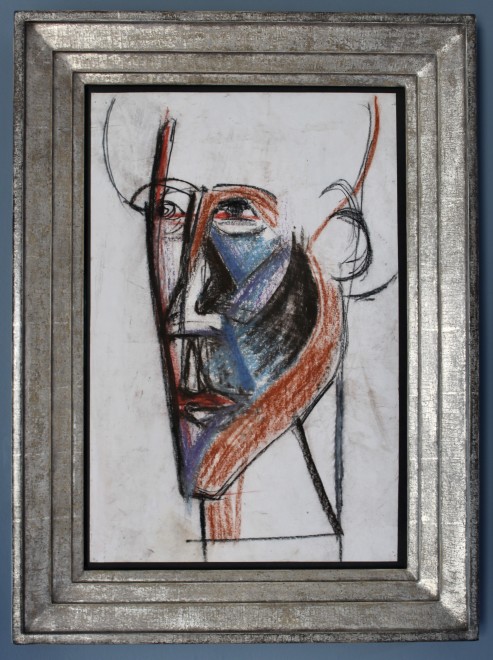Further images
Provenance
Acquired directly from the artist; by descent
Note: Dobson first met the Sitwells in 1919 as they were near neighbours in Chelsea and they had just arranged an important exhibition of Modern French Art at the Mansard Gallery featuring works by Modigliani amongst others. In 1921 Sir Osbert Sitwell commissioned a portrait bust from Dobson and he went for sittings at his house in Manresa Road, Chelsea nearly every day for three months. The result was the highly acclaimed polished brass head now in the collection of the National Portrait Gallery, London. Just at the time of these sittings, Osbert's sister, Edith, and their lodger William Walton were planning the musical entertainment Facade.
In fact, Dobson subsequently provided the backdrop for Facade. T. E. Lawrence regarded the brass head of Sitwell a brilliant work; 'the finest portrait bust of modern times...appropriate, authentic and magnificent in my eyes, I think it's his finest piece of portraiture and in addition it's as loud as the massed band of the Guards.'
The present work is a rare survivor from a number of drawings made by Dobson during the many sittings for the bust. Much of Dobson's early work was destroyed during the Blitz when his Manresa Road studio was bombed. Stylistically the drawing echoes the influence of Wyndham Lewis and the Vorticists, the oil pastel drawings of Gaudier-Brzeska, and indeed Modigliani whose work Dobson came to know through the Sitwells.
POA





